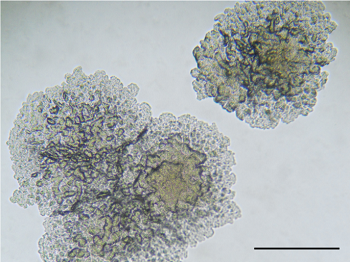Mycobacterium tuberculosis complex - Morphology, Cell Wall, Culture, Growth, Species
Morphology of Mycobacterium
The genus Mycobacterium consists of aerobic (some may require reduced O2 concentration), non-sporing, non-motile, very thin, slightly curved, or straight bacilli). It is gram-positive, and measures around 0.6 x 1-10 μm.
Some species display filaments and branching forms.
Cell wall, Cultural growth of Mycobacterium
In a liquid medium, they form mold-like pellicles. Hence, the name Mycobacterium spp. is derived from the “mold” meaning fungus-like bacterium.
They are slow growers (generation time 20-36 hours) as compared to other human pathogens due to this hydrophobic cell surface. Because of this hydrophobicity, they tend to lump and nutrients are not easily allowed into the cell.
Mycobacterium spp. has unusual cell wall structures. The cell wall contains N-glycolylmuramic acid instead of N-acetylmuramic acid. As it has high lipid content, it creates a hydrophobic permeability barrier. Staining with basic aniline dye is also difficult (Eg. Gram stain).
They resist decolorization with acidified alcohol (3% HCl) during staining with basic function dye. This property is referred to as acid fastness. Rapid-growing mycobacteria (RGMs) may partially or completely lose their characteristics.

Fig: Mycobacterium tuberculosis complex (Source: ResearchGate)
Species of Mycobacterium
The Mycobacterium tuberculosis complex includes:
Mycobacterium tuberculosis (human type)
Mycobacterium bovis (bovine type)
Mycobacterium bovis (BCG)
Mycobacterium africanum (intermediate between human and bovine type)
Mycobacterium caprae
Mycobacterium canettii
Mycobacterium microti (pathogenic to goats and other small animals)
Mycobacterium pinnipedii
Medically important Mycobacterium
Clinically, Mycobacterium is divided into 3 groups:
a. Mycobacterium tuberculosis complex
b. Atypical Mycobacteria (MOTT bacilli)
c. Mycobacterium leprae